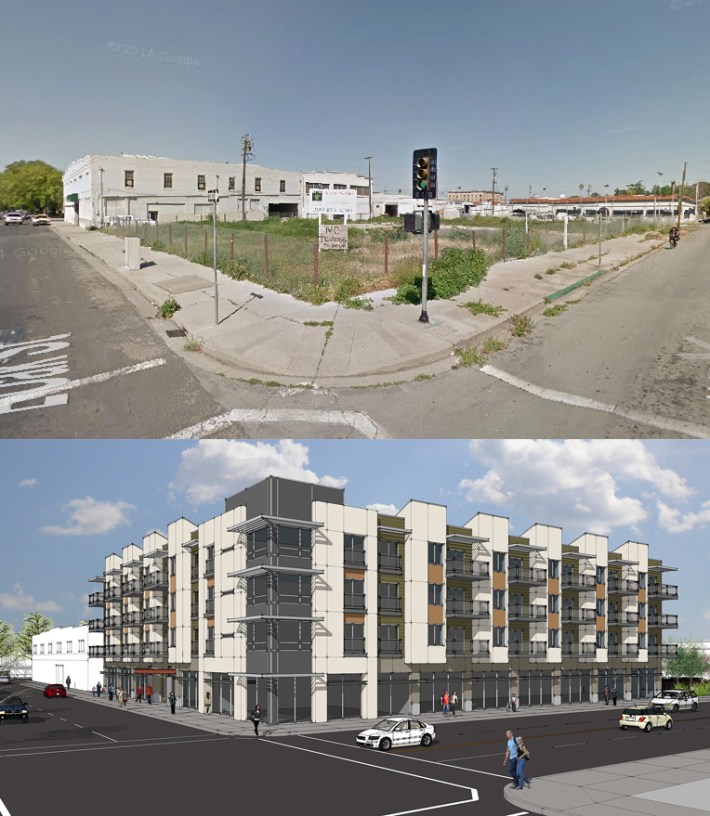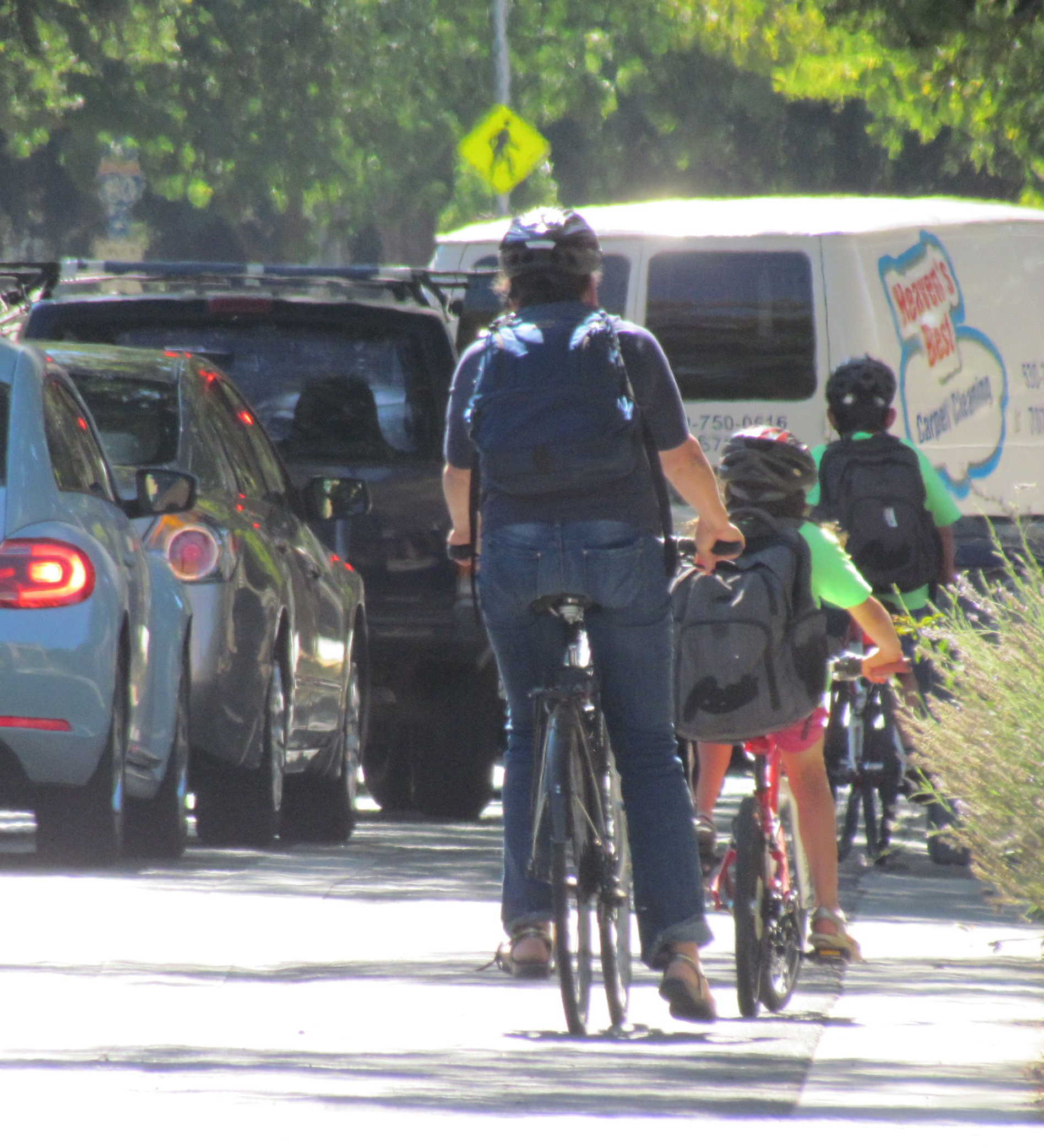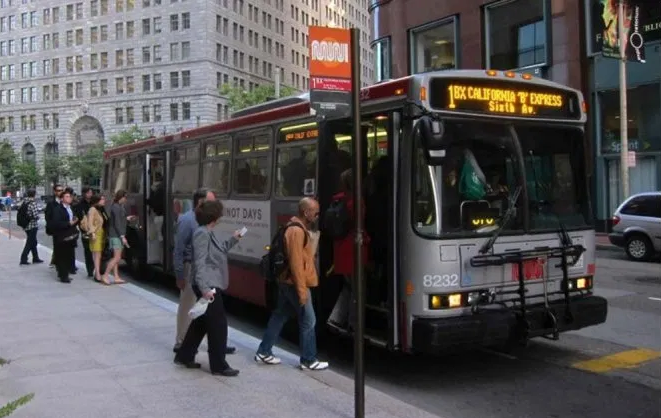Affordable Housing Awards from Cap-and-Trade Funds Announced
10:00 AM PDT on June 24, 2015

On Monday, the California Strategic Growth Council announced its recommendations for the first round of funding under the Affordable Housing and Sustainable Communities program. SGC staff recommended 28 projects, to be awarded a total of $122 million. The projects are split about evenly between Northern and Southern California.
Most of the recommended projects are for infill housing that include some transit, pedestrian, or bicycle improvements.
The Affordable Housing program is funded by California's cap-and-trade auctions. By law, auction proceeds must be used to reduce greenhouse gas emissions. The AHSC was formed in recognition of the role that affordable housing can play in reducing emissions. That is, if housing is built near transit and with quality connections for biking and walking, it's easier for residents to choose alternatives to driving, and thus reduce greenhouse gas emissions. This is found to be especially true with affordable housing.
The program is ambitious. In addition to reducing greenhouse gas emissions, the funds must also benefit disadvantaged communities. The Strategic Growth Council has also added other goals such as creating collaborations among entities working on housing and transportation--encouraging public agencies and private developers to work together, and housing developers to coordinate with transportation planners. Because of its complex requirements, staff created a two-step application process, in which potential grantees first submitted a simplified application. Those that were deemed likely to be eligible were invited to complete the more complex, detailed second application. Fifty-four projects were invited to apply in the second round, and offered assistance throughout the process.
The program awarded funds to projects all over the state: in nine regions, fifteen counties, 21 different cities. “I'm very pleased with the geographic distribution,” said McCoy. “One of our goals was to have projects that could serve as regional and local examples of what could be done. A diversity of places was important to us."
He says that in the final scoring, they made no allowance for geography other than the cap on how much money any one locality could be awarded. Some otherwise worthy projects did not get grants in this round because of that cap. Others didn't make the list simply because of the limited funds available.
The staff recommendations are expected to be approved by the Council at its next meeting on June 30. In July, a series of workshops is planned to discuss lessons learned from this first round of funding. (See end of post for details.)
“We've learned so many things in this round,” said Mike McCoy, director of the SGC. “It's been great to roll up our sleeves and get something out in twelve months, rather than philosophize for a couple of years about how this could be done.”
"And we're coming right back in July to talk about revisions to the guidelines."
Most of the projects recommended for funding are infill housing projects near transit, and many include some element of transportation infrastructure to improve connections to transit or encourage active transportation. For example, a senior housing project in Hayward will build new sidewalks, improve street lighting and crosswalks in the surrounding neighborhood, and create wayfinding between the project and the nearby BART station. It will also include bike lockers so residents can safely store their bicycles in an easily accessible location. Another project, the Westside Infill Transit Oriented Development in National City, will include construction of bike lanes, pedestrian pathways, and ADA enhancements in the surrounding neighborhood.
Other projects focus more on transportation, including a vanpool expansion in several central valley cities to help farmworkers carpool to work and a Bus Rapid Transit project in Chula Vista.
A prime example of the kind of project this program is trying to encourage is Anchor Village in Stockton, pictured in the image accompanying this story. Fifty-one affordable units for veterans and mentally disabled people at risk of homelessness will be constructed on what is currently a weedy vacant lot that used to be a tire supply store. The project is located in an area that's identified as one of the most disadvantaged communities in the state. It's close to a transit hub and a number of bus stops, and the developer will coordinate with the city to improve local intersections, adding and improving crosswalks, adding curb cuts and landscaping, and making the entire route to transit ADA accessible.
“We're really excited to be able to bring this project to fruition,” said developer Meea Kaing of Domus Development, “because it will be very transformational. Not only will we improve this vacant lot, we will be able to improve the surrounding infrastructure outside our property lines. It will seed other investment in the area and encourage more efforts at revitalization and collaboration.”
Other notable things about Anchor Village: each unit will be provided with discounted transit passes to further encourage transit use. The site will include a bike room that can park 68 bicycles—more than one per unit—and have enough room for repairing bikes. And it will provide relatively few spaces for parking cars.
Local zoning requires two car parking spaces per unit, but having to build that much could have made the project unworkable, as it would have greatly increased the construction cost per unit and reduced its affordability. Kaing was also convinced that those parking spots would sit empty, since her target resident population would not be likely to own cars nor be able to drive. She argued for lower requirements, and finally prevailed, getting approval to limit the number to 35 parking spaces. In the end, there will be more spaces to park bikes than cars.
Even though the local bike infrastructure is weak, the area is “very bikeable,” said Kaing. “It's flat, and there's very little traffic. It's also close to the waterfront, close to civic amenities, close to parks, and close to jobs.”
“I want to thank the SGC and [Department of Housing and Community Development] for their hard work in putting this program together,” said Kaing. “We're very honored to be on the list of projects.”
“This really is a model for what these programs can do for communities,” she said.
Director McCoy also pointed out one of the other ways these projects will bring benefits: by leveraging more funding. “At the end of the day, our funds helped put projects into play that have a total value of over six times what our contribution was. Our capital was important in unleashing a lot of other investment,” he said.
He noted that the amount of funds awarded in this first round—$122 million—was a “spit in the ocean” compared to the overwhelming need for housing. “But you have to put it in perspective,” he said. “Over time, as we're able to award more and leverage more every year for five years, you can creep up on it. It's an enormous problem, but if you keep at it long enough, it'll make difference.”
“This has been the most gratifying project of my career,” he added. “I've done a lot of interesting and exciting things, but putting people in houses—you can't beat it.”
The SGC's Deputy Director Allison Joe already sees other results from the program's first year. “There's been a shift in how people in housing talk about greenhouse gas reductions,” she says.
The Strategic Growth Council will meet on June 30 from 9 am to noon in Sacramento to consider the staff recommendations. A list of the projects recommended for funding is available here [PDF], and summary descriptions of them can be found here [PDF].
“Lessons Learned: Round One” will include two workshops, one in Southern and one in Northern California, in July:
- In Sacramento on July 14 from 2 to 5 pm
- In downtown L.A. on July 20 from 9 am to noon
Details on the workshops are available here.
Streetsblog California editor Melanie Curry has been thinking about transportation, and how to improve conditions for bicyclists, ever since commuting to school by bike long before bike lanes were a thing. She was Managing Editor at the East Bay Express, editor of Access Magazine for the University of California Transportation Center, and earned her Masters in City Planning from UC Berkeley.
Stay in touch
Sign up for our free newsletter
More from Streetsblog California
Active Transportation Program Calls for Volunteer Evaluators
Apply to be a volunteer ATP application evaluator by May 10.
Study: When Speed Limits Rise on Interstates, So Do Crash Hot Spots on Nearby Roads
Rising interstate speeds don't just make roads deadlier for people who drive on them — and local decision makers need to be prepared.
Eyes on the Street: New Lincoln Park Avenue Bike Lanes
The recently installed 1.25-mile long bikeway spans Lincoln Park Avenue, Flora Avenue, and Sierra Street - it's arguably the first new bike facility of the Measure HLA era
Independent Safety Advocates Beef up the Wiggle
Signs and soft-hit posts installed by advocates make the Wiggle bike route calmer and safer for cyclists and pedestrians
Thursday’s Headlines
LA Metro declares emergency over attacks on bus operators; Some deadly Bay Area streets to see safety fixes; Tax ride-hail to save transit? More




